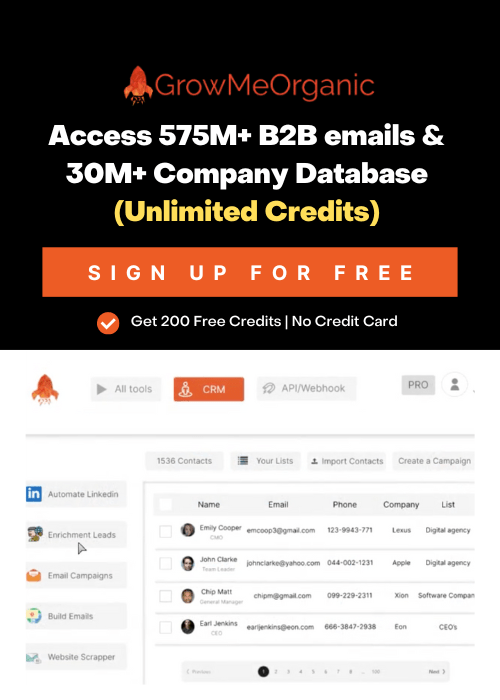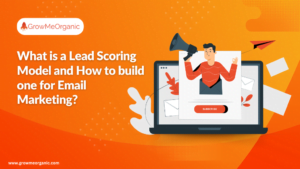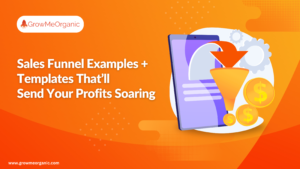Email users are projected to reach 4.89 billion by 2027, highlighting email’s importance as a marketing tool. But you may be wondering: cold emailing or email marketing? The answer depends on your goals; understanding these two processes is essential.
The main difference between email marketing vs cold emailing is the audience: email marketing targets an established audience, while cold emailing reaches out to new, unengaged contacts.
Both aim to gather leads, but they differ in approach. This guide explores the differences between cold email and email marketing to help you choose the right strategy.
What is Cold Emailing Marketing or Cold Emailing?
For startups with limited budgets, cold emailing is an effective way to introduce services and products to busy professionals. According to Hubspot, 78% of decision-makers prefer receiving cold emails from businesses, and McKinsey reports that cold emailing is at least 40 times more effective than social media marketing. That’s solid motivation. But how does cold emailing work?
- Use platforms like LinkedIn to identify potential users in productivity-focused fields like finance, tech, or marketing.
- Send them personalized emails showcasing how your app boosts productivity and accelerates goal achievement.
This approach initiates conversations with potential customers who can benefit from your products or services. Check out what this Reddit user has to say about cold emailing.
| “I was skeptical at first too, but cold email outreach has absolutely helped me. I carefully target relevant people and decision-makers. The open and response rates are lower than mass blasts of course. But the leads I do get convert at a much higher rate. So for me, tightly focused cold email drives quality over quantity” |
– Sarvpriy
How To Do Cold Email Marketing? [Free Template]
Cold emailing involves crafting a personalized message to capture a potential client’s interest. Start with a strong subject line. it determines whether your email will be opened or ignored. Invest time researching the recipient’s business and needs to ensure your message resonates. Take a look at this template.
Subject: Boost Your Sales Outreach with [Tool Name]
Hi [Recipient’s Name],
I hope you’re doing well! I wanted to introduce you to [Tool Name], a simple but powerful tool designed to make your B2B sales outreach easier and more effective.
With [Tool Name], you can reach more leads, save time on follow-ups, and track responses all in one place. It’s built for teams like yours to close deals faster without the hassle.
Would you be open to a quick chat? I’d love to show you how [Tool Name] can help your team hit its goals.
Best,
[Your Name]
After sending a cold email, you wait to see if the recipient responds with interest. While not every email will result in a sale or new client, persistence is key.
Cold emailing requires strategy, personalization, and patience, with each message increasing your chance of a response. With thorough research and attention to detail, cold emailing can effectively grow your business or network. However, understanding and balancing the pros and cons of cold emailing is essential.
Pros and Cons of Cold Emailing
Cold emailing, when executed correctly, builds genuine connections without risking spam. This table outlines key “dos” and “don’ts” to guide your approach.
| Pros of Cold Emailing | Cons of Cold Emailing |
| Cold emailing enables you to target prospects with personalized messages tailored to their needs and interests, turning cold leads into active ones. | If not done correctly, cold emails can appear generic or intrusive, especially if there is no prior relationship with the recipient. |
| Cold emailing allows you to reach a broad audience, including potential customers unfamiliar with your business—an advantage precious for startups. | Generating and verifying a large list of email recipients can take significant time and effort. Tools and services may be required, adding to the cost. |
| Cold emailing is a cost-effective way to reach out to potential customers. | You may need to invest in tools or services to manage and verify email lists, increasing overall costs. |
| By sending personalized cold emails, you can make connections and generate leads, ultimately driving sales and business growth. | Cold emails may not always get the desired response, and some recipients may ignore or delete them, affecting your engagement rate. |
When to Go For Cold Emailing?
Here are key situations when it works best:
- Target High-Quality Leads: Cold emailing is ideal for reaching out to individuals or companies most likely interested in your product or service.
- For Scalable Revenue Generation: If you need a channel that can be replicated across multiple campaigns, cold emailing offers a scalable solution to generate consistent revenue.
- To Make Lead Generation Repeatable: Cold emailing allows you to establish a repeatable process, helping you continuously generate new leads and customers over time.
- When Cost-Effectiveness is Key: If you’re looking for a budget-friendly way to connect with potential customers, cold emailing is the most cost-effective method
- To Automate Outreach: With the right tools, cold emailing can be automated, allowing you to follow up, track performance, and personalize messages for better engagement.
What is Email Marketing?
Email marketing involves sending personalized, targeted emails to individuals who’ve opted in to hear from you, potentially generating up to 45 times your investment in revenue. Unlike cold emailing, these recipients expect your messages, making them more likely to engage. It’s about building relationships, not just sending emails.
| Definitely – with the right content and call to action. Important to tailor it to a specific audience as to be more personalized.Also important to have the right tracking / pipeline automation so you can see who didn’t open, opened, and clicked. |
Build trust and credibility by offering valuable content and exclusive deals to turn one-time readers into loyal customers. Email marketing supports this with varied approaches.
Types of Email Marketing
It comes down to the type of audience you want to target. Based on this distinction, email campaigns are segmented into the following types.
- Newsletters: Regular updates (weekly or monthly) that share news and happenings in your business.
- Promotional Emails: Special offers or discounts encouraging customers to act within a set timeframe.
- Transactional Emails: Important messages regarding orders, payments, and other customer transactions.
These types are used in email marketing strategies to gain trust and generate long-term loyalty.
Pros and Cons of Email Marketing
A well-defined B2B contact database is essential for a personalized cold email marketing campaign. Targeted emails deliver relevant messages to specific contacts, effectively conveying your brand. Here are the key pros and cons of email marketing to consider.
| Pros of Email Marketing | Cons of Email Marketing |
| Build Relationships: Engage your audience with personalized, valuable content, fostering trust and loyalty. | Annoying for Recipients: Too many irrelevant emails can lead to frustration, causing unsubscribes or spam reports. |
| Track Results: Monitor open rates, click-through rates, and conversions to improve future campaigns. | Difficulty to Stand Out: With crowded inboxes, grabbing attention and differentiating your message can be tough. |
| Cost-Effective: Reach a large audience without the high costs of traditional advertising. | Email Filters and Spam Blockers: Filters can block emails, reducing the chances of reaching the intended audience. |
| Legal Issues: Not following anti-spam laws or providing opt-out options can lead to penalties and reputational harm. |
While email marketing offers numerous benefits, like building relationships and being cost-effective, navigating its challenges carefully is essential. Here’s how to write a marketing email that grabs attention, delivers value, and avoids common pitfalls.
How to Write a Marketing Email? [Free Email Template]
To write a marketing email, start with a compelling subject line that grabs attention. Keep the opening sentence engaging and relevant to the reader’s needs. Provide valuable content or offers, use a clear call to action, and keep the design simple. Personalize the email where possible to increase impact.
Take a B2B sales outreach and email marketing tool as an example..
Hi [Recipient’s First Name],
I hope this email finds you well! I’m reaching out because I noticed that [Company Name] might benefit from [Your Tool Name] — a powerful sales outreach and email automation tool designed to help businesses like yours generate more leads, save time, and boost conversion rates.
With [Your Tool Name], you can:
- Automate outreach: Set up personalized email campaigns and follow-ups, ensuring consistent communication with your leads.
- Increase engagement: Use data-driven insights to optimize your emails and increase open and click rates.
- Save time: Focus on what matters most by automating repetitive tasks and targeting the right prospects at the right time.
Many of our clients have already seen significant results in streamlining their sales process, and we’d love to help [Company Name] do the same.
I’d be happy to offer a free demo or answer any questions you have about how [Your Tool Name] can specifically benefit your team. When would be a good time to chat?
Looking forward to connecting!
Best regards,
[Your Name]
[Your Job Title]
[Company Name]
[Your Contact Information]
[Website URL]
This concise template highlights critical benefits with a clear call to action (CTA) for scheduling a demo or a conversation. You can customize it further based on your target audience and any specific offers you might have.
When to Go For Email Marketing?
Use email marketing when you want to nurture leads, retain customers, announce new products, or promote special offers. It’s also effective for building brand awareness, driving website traffic, and personalizing customer communication. Start email campaigns when you have a targeted list and clear goals.
Here’s when you should consider using it:
- Building Relationships: If you want to stay connected with your customers, email marketing allows you to send personalized updates, newsletters, and offers that keep your audience engaged.
- Educating Customers: Use email to educate your audience about your products or services. Providing value through content like tutorials, blog posts, or guides helps position your brand as an authority.
- Driving Conversions: Email marketing effectively prompts action, whether that’s making a purchase, signing up for a trial, or downloading a resource. Targeted campaigns for specific segments increase the likelihood of lead conversions.
- Cost-Effective: Unlike many other marketing methods, email marketing doesn’t break the bank. With the right tools, you can reach a wide audience without spending too much on advertising.
- Engaging a Sizable Audience: If you already have a healthy email list, email marketing can be an ideal way to keep your audience engaged and drive sales.
Email marketing is ideal for engaging an established audience and nurturing long-term relationships, unlike cold emailing. For goals focused on nurturing and converting, email marketing is more effective. To clarify the nuances, let’s examine the key differences between cold emailing and email marketing.
Differences Between Cold Emailing and Email Marketing
Let’s take a closer look at how cold emailing and email marketing differ in purpose, target audience, and execution.
| Conditions | Cold Emailing | Email Marketing |
| Aim | Focused on generating new leads and reaching out to prospects without prior relationships. | Aimed at nurturing relationships with existing customers and promoting ongoing engagement. |
| Frequency | Sent on a one-time basis to initiate a conversation or action. | Involves sending a series of emails over time to build trust and engagement. |
| Metrics and KPIs | Measured by responses, meetings, or initial interest. | Measured by open rates, click-through rates, and conversions. |
| Tools | Requires tools for finding and verifying email addresses sending high volumes. | Uses comprehensive tools for managing lists, creating personalized content, and analyzing performance. |
| Level of Personalization | High level of personalization tailored to the recipient’s needs and pain points. | A lower level of personalization, aimed at a broader audience with general messages. |
Ultimately, aligning your strategy with your business objectives and audience preferences with your choice for meaningful results is crucial.
We are almost done. It’s time to check the common mistakes email marketers and sales professionals commit to avoid them.
Email marketing vs. Cold emailing: Common mistakes
Here’s a table summarizing the common mistakes in email marketing vs cold email:
| Parameter | Cold Emailing Mistakes | Email Marketing Mistakes |
| Focus | Focus on product features, not benefits | Overloading emails with too many graphics and photos |
| Call-to-Action (CTA) | No CTA is mentioned, or the CTA is unclear | Lack of clear communication or frequent emails without engagement |
| Clarity of CTA | Multiple or complicated CTAs cause confusion | Being unresponsive to mobile devices or poor email design |
| Email Length | Long email copy, too many details | Excessive or irrelevant content leading to recipient disinterest |
| Sender Identity | No ‘From’ name, causing confusion | Poor communication and inconsistent frequency |
| Audience Engagement | Failure to personalize or engage the recipient | Failing to automate or set a reasonable email frequency |
Avoiding these mistakes can make cold emailing and email marketing powerful tools for engaging prospects and building audience relationships. Now is the time to choose the right sales outreach tool to enhance your cold emailing and email marketing strategies, ensuring you achieve the desired outcomes.
GrowMeOrganic: Your Go-to Email marketing and Cold Emailing Tool
If you need a tool to help you with your cold emailing or email marketing, you can try us. GrowMeOrganic streamlines the process by automating tasks such as personalization, follow-ups, and tracking emails. This allows you to focus on both cold emailing and email marketing processes.
Don’t believe us, hear it first from the experience of some of our users:
| This is an all in one tool for cold outreach, this warms up your email accounts. scrape data from linkedin sales navigator and send email sequences. You can then keep a track of all the outreach activity. |
| I have been using GrowMeOrganic for 6 months and it has been one of the best investments so far. The chrome extension is user-friendly that helps to export leads from LinkedIn in bulk. Also, the cold outreach system is robust. |
By leveraging our email automation and other sales outreach platform features, you can scale your efforts, optimize outreach, and increase conversion rates while saving valuable time.
Sign up for a 14-day free trial and see how your marketing strategies convert!
FAQ related to Cold Emailing Vs Email Marketing
1. Is Email Marketing Better Than Cold Emailing?
Email marketing excels at nurturing long-term relationships with existing customers, providing value, and driving conversions. In contrast, cold emailing is best for generating new leads by contacting prospects without prior engagement.
2. Is Cold Emailing A Part Of B2B Sales Outreach?
Cold emailing is crucial for B2B sales outreach, enabling businesses to connect with potential clients, introduce services, and generate leads. With a strategic approach, cold emailing effectively builds connections, nurtures relationships, and drives sales in B2B markets.
3. What Do I Need For Email Marketing?
You’ll need an email list, an email marketing platform, compelling content, clear call-to-actions, and effective segmentation to target the right audience for optimal engagement and conversions.
4. Email Outreach Vs Marketing Email? Which Is Better?
Email outreach focuses on personalized, one-on-one communication to engage potential leads directly, while marketing emails are sent in bulk to a larger audience with promotional content.
Email outreach is more targeted and relationship-driven, making it better for generating quality B2B leads. Marketing emails, however, are ideal for brand awareness.
5. Where Will I Get Leads For Cold Emailing?
You can get leads for cold emailing from LinkedIn, industry directories, business events, networking groups, and social media, or you can use lead generation tools like GrowMeOrganic.
About Post Author
Anant Gupta
Growth Hacker, Marketing Automation Enthusiast & Founder of GrowMeOrganic








